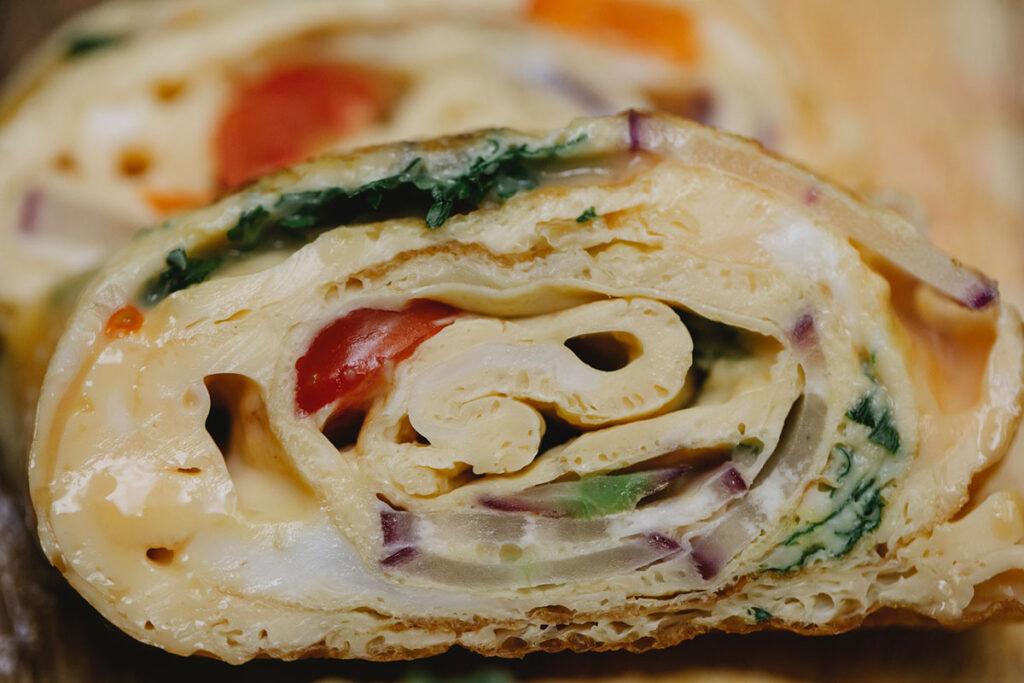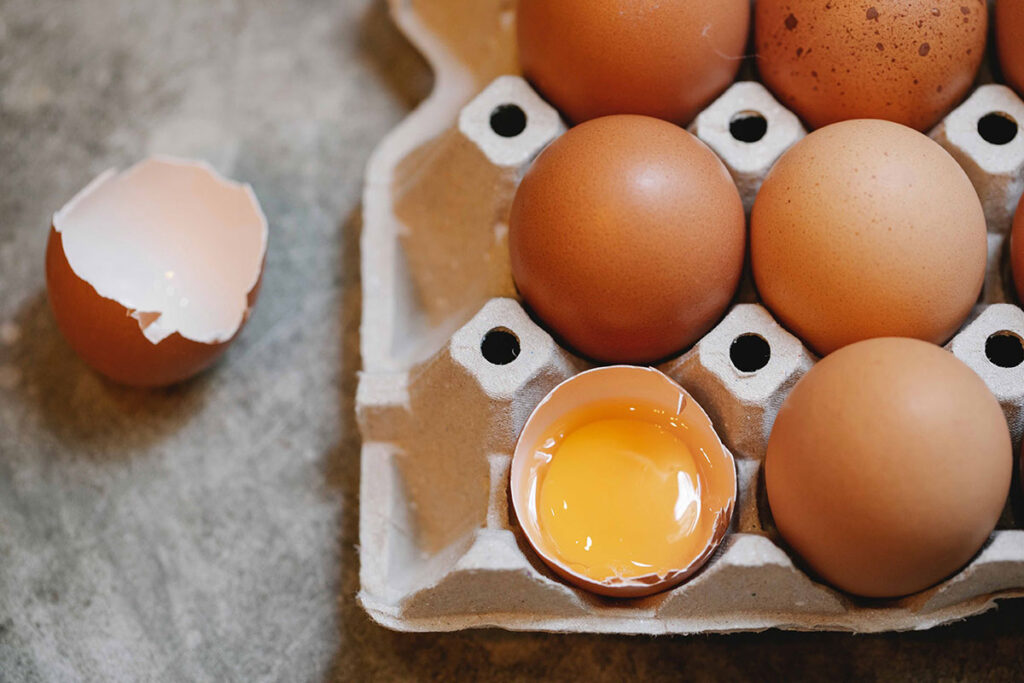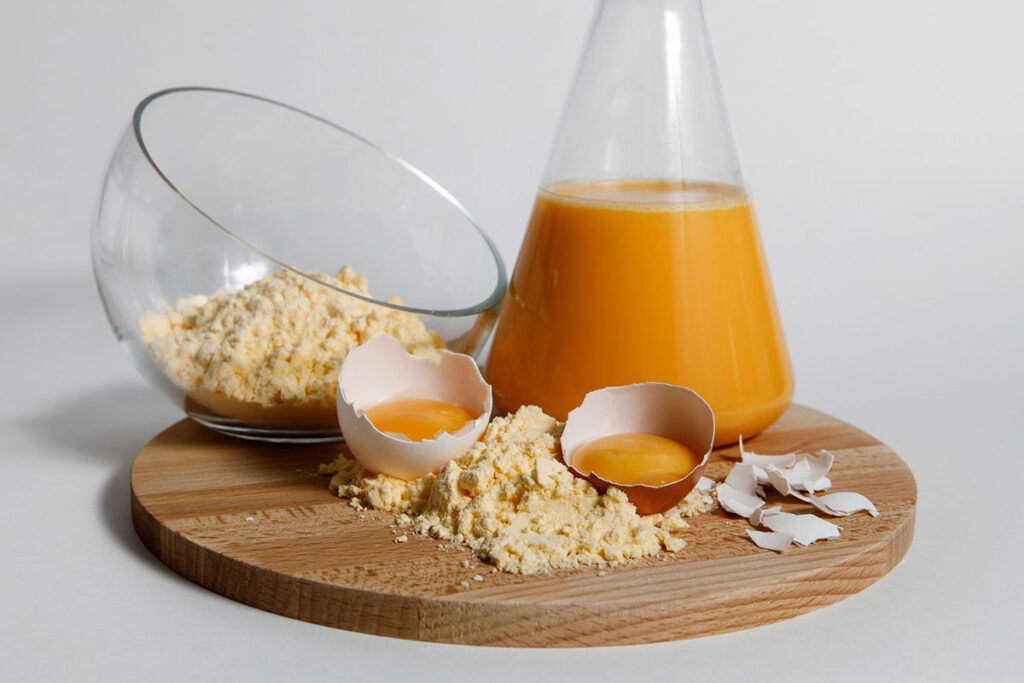In the world of culinary arts, eggs are one of the most essential, nutritious and versatile foods on the planet. Eggs are cheap, taste awesome and go with almost any food.
Not only can they be eaten on their own, eggs are used in many recipes like desserts, cakes, breads, soups and sauces. There are many different ways to prepare eggs. Some of the most common are fried eggs (over-easy and sunny side up), scrambled, poached, boiled (hard-boiled and soft-boiled), shirred or baked eggs, frittatas, and omelettes. Check out our featured U.S. egg recipes on: https://usapeecasean.com/recipes/
Rapid urbanization, changing lifestyles, and the pandemic have pushed more consumers to make the switch from shell eggs to processed eggs. Processed eggs eliminate the need to manually break shells and separate various components of the egg. And due to technological advancements, processed eggs are more efficiently treated and pasteurized, assuring safety and reduced risk of contamination.

Omelettes, paired with meat and vegetables, can tide you over until lunch. (Photo: Klaus Nielsen)
Simply nutritious!
A single large egg (50 grams) provides around 70 calories, along with 6 grams of protein, 5 grams of fat, and less than a gram of carbs. It also provides a whole load of vitamins and minerals, including Vitamins A, B2, B5, B9, B12, Vitamin D, choline, iron, phosphorous, selenium and zinc.
Different grades of eggs
You’ve probably seen eggs labelled as ‘Grade A’ or ‘Grade AA’ in stores. What do these grades mean? The U.S. Department of Agriculture (USDA) grades eggs sold to consumers as AA, A, and B. These grades are based mostly on the thickness and firmness of the whites of the egg, and how round and high the yolks are, all of which are linked to freshness. The fresher the eggs, the higher and rounder the yolks will be, and the thicker the whites. As an egg ages, the yolk will be flatter and the white will be runnier.
Grade A eggs are very high quality while AA eggs are of the highest quality (near perfect appearance). This is especially important in preparations where you see the whole yolk, such as with poached or fried eggs. Grade A is the one that’s sold most commonly in stores but you can also find AA eggs here. Grade B eggs tend to have flatter yolks and runnier whites and are mostly used to make liquid, frozen, and dried egg products.

The different grades of eggs are based on the thickness and firmness of the whites, and roundness of the yolks. (Photo: Klaus Nielsen)
Processed eggs
Eggs products are now available in a multitude of convenient and precooked forms. More consumers are using products such as pre-cooked fried eggs and pre-cooked scrambled eggs in recipes. Liquid eggs benefit pre-prepared and microwave dishes and are used widely to bind and emulsify food such as salad dressings, sauces, dips, and mayonnaise. What’s more? These egg products are more convenient to use and easier to store than fresh whole eggs, as they have a longer shelf life. Simply put, this means no shells, no waste, no mess!

Compared to fresh eggs, processed egg products are more convenient to use and easier to store. (Photo: Ruzovo)
Production
Liquid eggs: The eggs are broken and checked, filtered, and stored in chiller tanks. They are then pasteurized to destroy pathogens and viruses. The pasteurized liquid eggs are then packaged and chilled. After a thorough series of quality checks, laboratory testing and monitoring for possible egg threats, they are then certified safe for delivery.
Powdered eggs: This involves an additional step where the pasteurized liquid eggs are dried through a special process and made into powder.
Storage and handling
The Singapore Food Agency (SFA) recommends these easy-to-follow tips at home:
Powdered eggs:
- Check the ‘use-by’ date.
- Store in a cool dry place.
- After opening, the packaging or container should be sealed tight and stored in a cool, dry place at the temperature recommended by the manufacturer.
Liquid eggs:
- Check the ‘use-by’ date and do not store longer than the recommended shelf life.
- Keep liquid eggs refrigerated at all times at the recommended temperature.
- Best to use the product immediately after opening and do not store for more than 3 days after opening.
- Do not freeze package or cartons of liquid eggs that are already opened.
For more information, visit the American Egg Board at: https://www.incredibleegg.org








